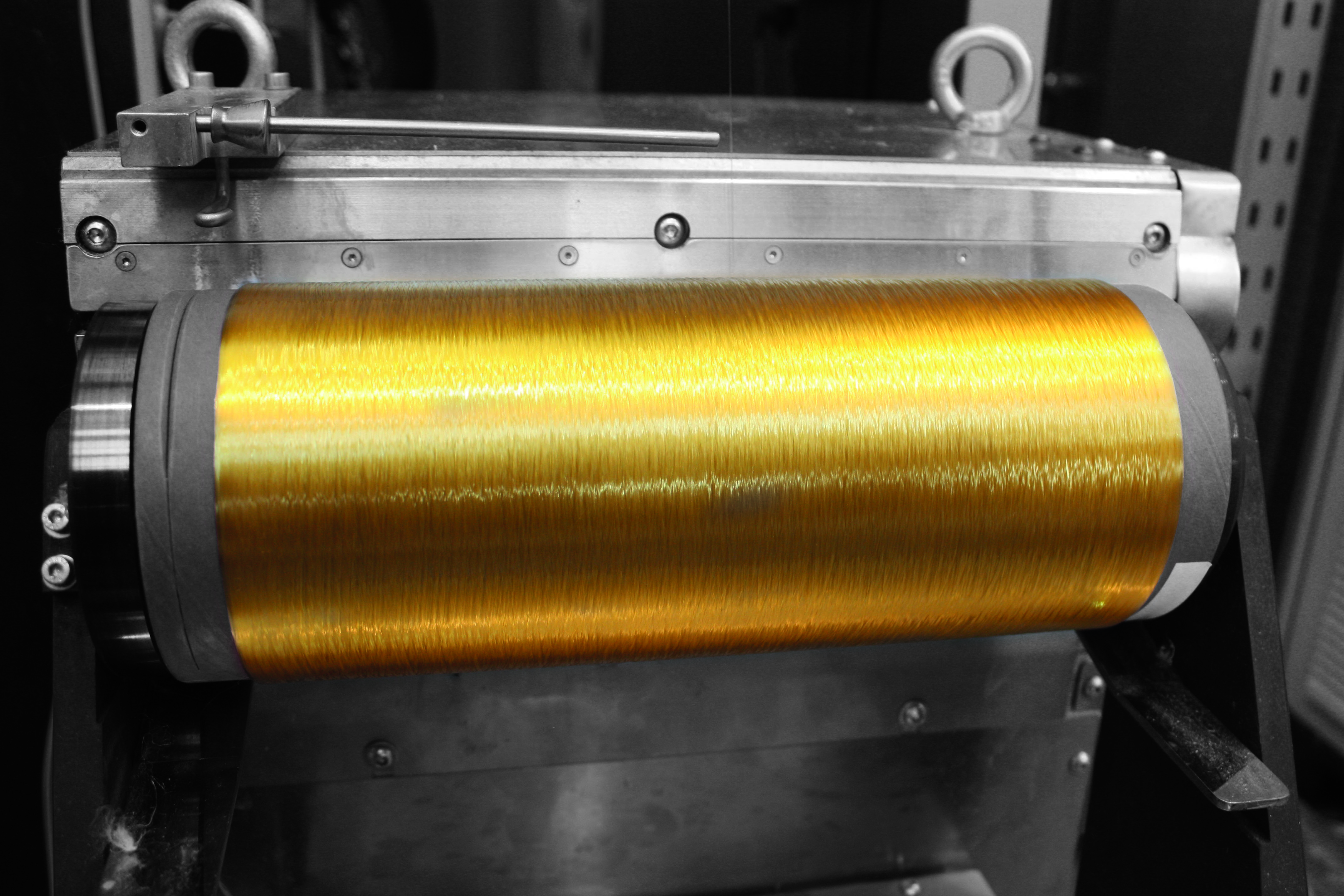Whether they are used in aircraft, racing cars, and bicycles - carbon fibers are the most advanced reinforcement fibers for extremely lightweight composites. Nevertheless, it remains difficult to penetrate mass markets, like the automotive and construction industries, as well as other industries that currently use glass and natural fibers. One of the main reasons is the high production costs of today’s carbon fibers. The ComCarbon® technology developed at the Fraunhofer Institute for Applied Polymer Research IAP will make it possible in the future to produce carbon fibers for the mass market at low cost.
Approximately half of the cost of producing conventional carbon fibers is incurred in the production of the precursor: polyacrylonitrile fiber (PAN). This so-called precursor fiber cannot be melted and is therefore produced using an expensive solution spinning process. The Fraunhofer IAP has developed an alternative PAN-based precursor technology that can save about 60 percent of the costs incurred by the precursor, i.e. about 30 percent of overall costs to produce the carbon fiber. It is based on a low-cost melt spinning process using special meltable PAN copolymers developed at the institute specifically for this purpose. Once they are converted to an unmeltable state, these cost-effective precursor fibers can then be processed into carbon fibers in the same way as conventional precursors using established production routes.
Melt spinning has enormous economic and ecological advantages over solution spinning. No environmentally-harmful solvents are involved, which therefore do not have to be recycled at great expense. One ton of spinning mass directly supplies one ton of precursor fibers and the spinning speeds are many times higher than with solution spinning.
 Fraunhofer Group for Materials and Components - Materials
Fraunhofer Group for Materials and Components - Materials